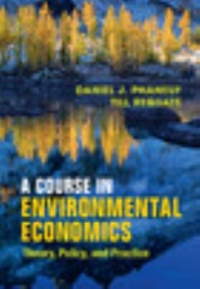Modify the model in this chapter by considering a closed economy with endogenous wage formation. The production
Question:
Modify the model in this chapter by considering a closed economy with endogenous wage formation. The production sector is now characterized by a decreasing returns to scale production function F(L,E) where E is a polluting input, L is labor, and FLE>0, FEE<0, and FLL<0. Emissions are directly proportional to the polluting input, so that emissions and the polluting input are interchangeable and the damage function is D(E). The household owns the firm and collects its profits.
(a) Set up the conditions for an unregulated competitive equilibrium (no government budget, no regulation of emissions). Assume now that the regulator sets an emission standard E and charges a labor tax m paid by the consumer to finance a fixed budget G.
(b) Conduct a comparative static analysis with respect to E and m on all endogenous variables, including the now endogenous wage rate.
(c) Determine the second-best optimal combination of the emission cap and the labor tax, and derive an expression for the marginal cost of public funds. Assume now an emission tax with revenue recycling is possible.
(d) Conduct a comparative static analysis with respect to the emission tax rate τ and the labor tax m on all endogenous variables.
(e) Determine the second-best optimal combination of the emission and the labor tax. Investigate and interpret the decomposition of the emission tax rate.
(f) Modify the model by assuming the firm has a constant returns to scale production function F(L,E), where profits are zero. Proceed as above. What difficulties do you face and how do you solve them?
Step by Step Answer:

A Course In Environmental Economics
ISBN: 9781316866818
1st Edition
Authors: Daniel J Phaneuf, Till Requate





